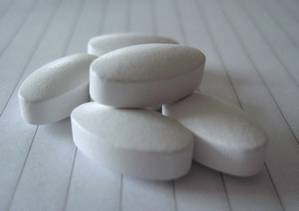Calcium and Osteoporosis
As calcium is such an important component of the bone it comes as no surprise that there is a link between calcium and osteoporosis.
Over 99% of the body’s calcium is contained in the skeleton, and the nutrient is required for both the building and the maintenance of bone tissue. Aside from its skeletal role calcium is involved in many other important bodily processes, such as blood clotting, contraction of muscles, nerve cell signalling, and heart function.
Bone mass loss typically begins from the age of 30 and leads to a lack of bone strength. This is because bones become less dense, and the quality of the bone composition itself decreases.
Osteoporosis itself is defined as ‘a skeletal disorder characterized by compromised bone strength predisposing a person to an increased risk of fracture’ Ref: Hellekson.
Calcium and Osteoporosis: The Calcium Bank
It is a good metaphor to think of calcium in the bones as being money in a bank, and calcium in the blood stream as being cash in your wallet. If you require money to buy food, and there is none in your wallet, then you will withdraw it from the bank, and spend the cash where it is needed. When you are paid, you will deposit money back into the bank and maintain your balance. Likewise, if calcium is required for important body functions, and none is available in the blood, then it will be withdrawn from the bone and released into the blood stream, where it can be delivered to where it is required.
Unfortunately, when we have excess calcium in the blood it cannot all be deposited straight back into the skeletal bank as it can only be deposited back into the bones at a certain rate. The body is unable to produce calcium, and any excess calcium in the blood will be excreted by the body through urine, feces, sweat, skin, hair, and the nails.
This is why it is important that people who take calcium supplements for the treatment of osteoporosis split their dosage over a day (no more than 500 mg at once). People who consume calcium through their diet are more likely to naturally split up their calcium intake throughout the day, but should still keep in mind that calcium can only be absorbed by the bone at a certain rate.
Just like money in a bank, it is easy to imagine that if you withdraw more than you put in, that the overall balance will go down. This, together with the fact that the bone remodeling cycle (the process of removing and depositing calcium, and other minerals in the bone) loses efficiency as a person ages is one of the main reasons why there is such a strong link between the consumption of calcium and osteoporosis.
The second problem regarding osteoporosis and calcium is that most people following a western diet do not consume enough of the mineral. The general recommendations for adults is 1000 mg/d in adult, raising to 1200/1300 mg/d in women over 50, and men over 70 (actual calcium intake recommendations [linkmeplaceonpage] vary from country to country).

The average amount of calcium consumption by a person following a typical American diet is just 450–500 mg/d. It is therefore very important that people make a conscious effort to include more of the mineral in their diets: see calcium rich foods list, or take daily supplements of calcium
Calcium Alone Does not Lower the Rate of Bone Loss
In addition to calcium, many other nutrients are important for bone health, and are essential in the prevention of osteopenia and osteoporosis.
Some of the most important bone-building nutrients are the vitamins K and D; magnesium, zinc, copper, manganese and fluoride. All of these are either required components of the bone matrix, or play an active role (usually as part of enzymes) in the control of the bone remodeling cycle. Therefore, if one was to consume adequate supplies of calcium, but not of any of these key minerals, the skeleton would not be able to absorb and incorporate the available calcium into the bone.
It is therefore very important that your extra calcium for osteoporosis diet should include foods that are rich in these other nutrients.
TL;DR
- Calcium is an important component of the bone matrix that cannot be produced by the body.
- If there is not enough calcium in the bloodstream then the mineral is released from the bones so that it can be used where it is needed.
- People following a typical western diet do not consume enough calcium.
- Calcium can only be absorbed into the bone at a certain rate.
- Excess calcium in the blood stream is released from the body through, hair, urine, nails and other ways, as opposed to being taken up by the bones.
- People following a typical western diet do not consume enough calcium.
- To be effective calcium osteoporosis supplementations should be taken in small amounts several times a day.
- Calcium consumption alone is not enough to maintain bone mass as other nutrients are required for bone maintenance.